
views
- First, try wiping down yellowed appliances with an all-purpose cleaner containing bleach or scrubbing it with a magic eraser since these are the gentlest solutions.
- Or, wipe appliances with a mix of 4 c (0.95 L) water, ½ c (118 mL) bleach, and ¼ c (25 g) baking soda. Let it sit for 10 minutes, then rinse.
- For severe yellowing, coat the appliance in 40-volume cream peroxide, wrap it in clear plastic, and set it in sunlight for 3-4 hours. Rinse with a damp cloth.
Doing a Basic Cleaning
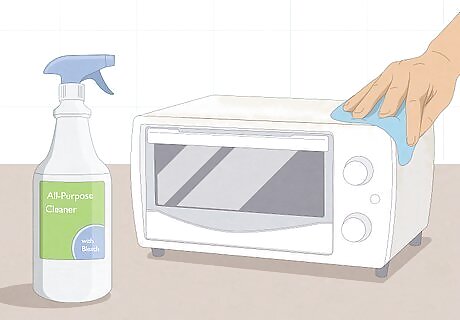
Wipe down appliances with an all-purpose cleaner containing bleach. To clean white plastic and other appliance surfaces, spray the product onto a clean cloth or sponge and wipe down the surface thoroughly. Then, rinse with a clean, damp cloth. Before buying, read the product label to make sure that it is safe for use on appliances. If you’re unsure, test it on a small, hidden area to make sure it doesn’t cause damage. Maintain white surfaces by doing a basic cleaning every week. Always target yellowing areas as soon as possible—the sooner you clean them, the easier they are to whiten.
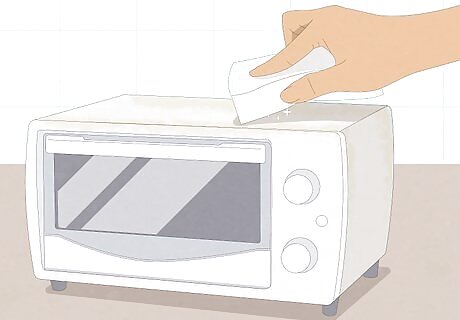
Scrub the appliance with a magic eraser pad. Simply wet the sponge, then squeeze out the excess water so it’s damp (not soaked). Wipe down the surface of the appliance thoroughly and with firm pressure. There is no need to rinse afterwards! Magic erasers are great for sensitive electronics that can’t take much water, like computer keyboards. Magic eraser pads are safe for use on most surfaces that don’t have a delicate or glossy finish.
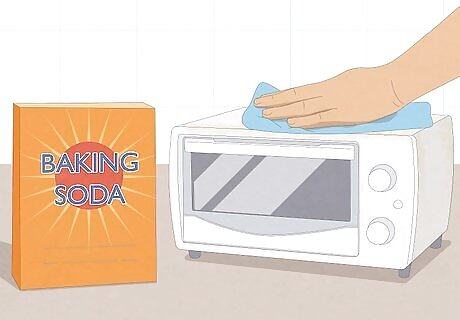
Clean yellowing surfaces with baking soda and a rag. Sprinkle a generous amount of baking soda onto a damp, clean cloth and wipe down the surface of your yellowed appliance with firm pressure. For hard to reach parts or corners, use a damp, soft-bristled toothbrush or cleaning brush sprinkled with baking soda. To rinse, wipe with a clean, wet cloth. The baking soda acts as a gentle abrasive to help scrub away the topmost, yellowed particles from the surface (it’s a natural deodorizer, too!).
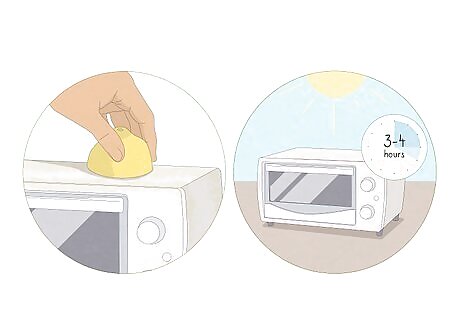
Coat appliances in lemon juice and set them in the sun for 3-4 hours. First, cut a lemon in half and rub both parts over the yellowed part of your appliance. Leave the juice to sit on the plastic for a few minutes, then transfer the appliance outdoors. Set it in a spot that receives decent sunlight, but not too much direct light (the heat may cause damage to the machinery of your appliance). Leave the appliance outside for a few hours (make sure there’s no rain in the forecast!), then bring it inside and rinse the lemon juice away with warm, soapy water or an all-purpose cleaner. If needed, rotate the appliance every 1-2 hours so the sun hits it evenly. The UV rays from the sun interact with the acid in lemon juice to whiten the plastic underneath (similar to how some people use lemon juice to lighten their hair).
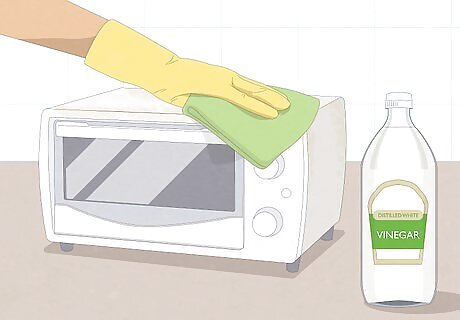
Scrub yellowed plastic with distilled white vinegar. Put on a pair of cleaning gloves to keep the vinegar from potentially stinging any cuts or scrapes on your hands. Then, soak a soft cloth or sponge in the vinegar and wipe the yellowed areas of your appliance with gentle pressure. Let the vinegar sit for a moment, then wipe the area clean with a damp cloth. The acetic acid in vinegar makes it an effective cleaning solution. Don’t worry about the strong smell. Once all of the vinegar evaporates, the scent will be gone. If you’re sensitive to the smell, open a window for ventilation while you clean.

Use a bleach and baking soda solution for stubborn yellow areas. Combine 4 cups (0.95 L) of warm water, ½ cup (118 mL) of bleach, and ¼ cup (25 g) of baking soda in a clean bucket, mixing so the baking soda dissolves completely. Put on a pair of cleaning gloves and dip a fresh sponge in the liquid. Wring it out, then wipe down the surface of your appliance. Let the bleach solution sit for 10 minutes, then wipe the appliance once more with a clean, wet sponge. You may need to repeat the process a couple of times for the best results. Make sure to wait the full 10 minutes each time. If mixing your own solution sounds too tedious, try buying a commercial cleaner designed to remove yellowing from white plastic.
Using Cream Peroxide
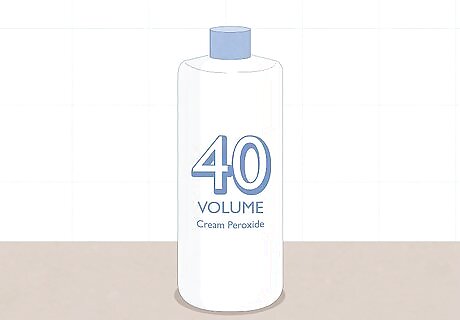
Purchase a bottle of 40-volume cream peroxide from a hair supply store. Cream peroxide ranges in concentration from 9-12%, making it more effective than normal hydrogen peroxide at 3%. This ingredient is used to bleach and color hair in salons and may also be found in permanent hair dye kits (sold in pharmacies and department stores). Alternatively, use regular liquid 3% hydrogen peroxide if you can’t find the stronger cream version. The process is the same, but will take longer.
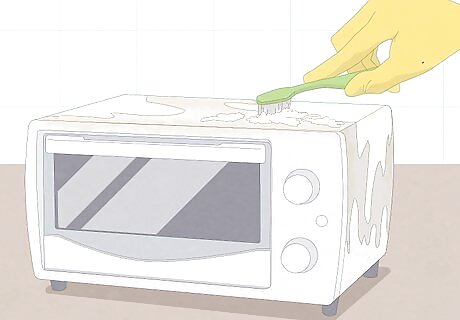
Use a brush to coat the appliance evenly with cream peroxide. Put on gloves to protect your skin, then cover any emblems, stickers, buttons, or openings on the appliance with tape to protect them. Use a toothbrush or paint brush to apply the cream peroxide to the surface of the appliance, or spread it around with your gloved hands. Coat the appliance carefully, making sure no cream gets inside of it. Target the yellowest areas with a slightly thicker layer of cream. If you’re using 3% liquid peroxide, soak a cloth or brush in it and wipe down the yellowed areas.
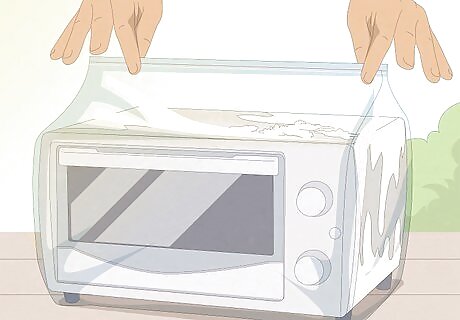
Seal the item in plastic wrap or a clear plastic bag and put it in the sun. Use a resealable plastic bag or clear trash bag for items like blenders or microwaves that will fit. For very large items, like the front plastic vent of an AC unit, use plastic wrap to ensure complete coverage. Make sure there are no tears or openings in the plastic (this keeps the cream wet, which helps it work more effectively). Place the item outside in direct sunlight. Check weather reports to make sure that it will be sunny for several hours before starting the process. This method of whitening is ideal for small to medium sized appliances that can easily be covered and moved outdoors.
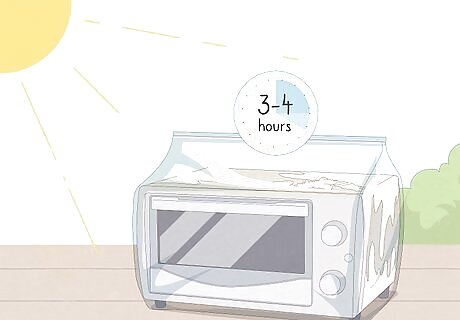
Let the item sit outside in the sunlight for at least 3-4 hours. Rotate the item every hour so that all parts of it get equal sunlight. Avoid harsh, direct sunlight, as the heat can damage the sensitive machinery inside appliances (if you’re only whitening a plastic cover with no electrical components, then direct sunlight is fine). Exposure to UV light will prompt a reaction with the cream peroxide, reversing the yellowing effect on the appliance. If you’re using 3% peroxide, leave the appliance in the sunlight for as long as possible (it requires more time to work because it’s a more diluted solution).
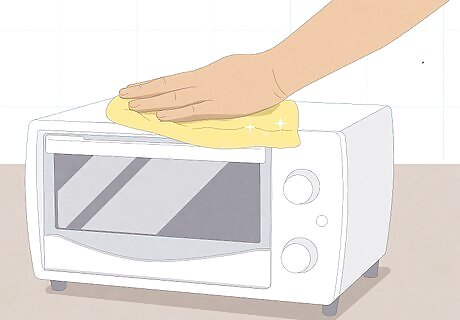
Bring the item inside and rinse the cream off with a wet cloth. Once the appliance is inside, remove the plastic bag or plastic wrap and wipe the cream away with a clean rag or sponge. Allow the item to dry for several hours before using it. If you still notice some yellowing, wait for the appliance to dry completely and then reapply the peroxide cream and repeat the process.


















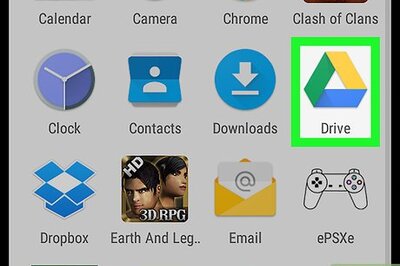

Comments
0 comment